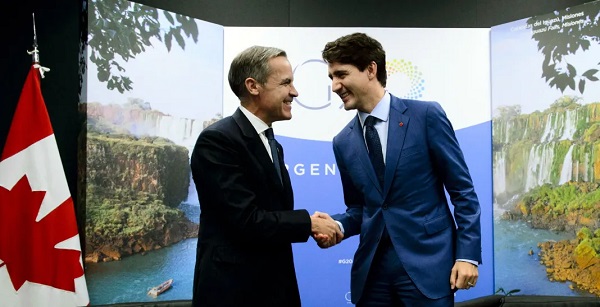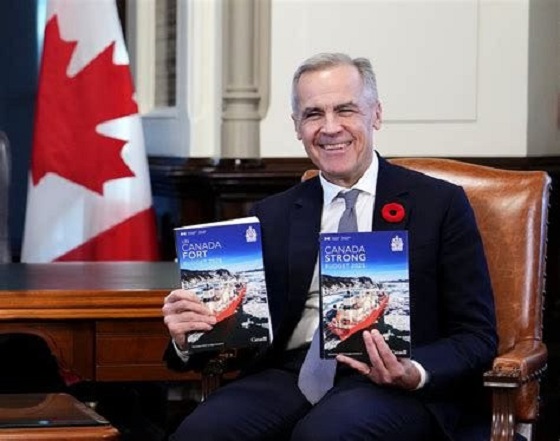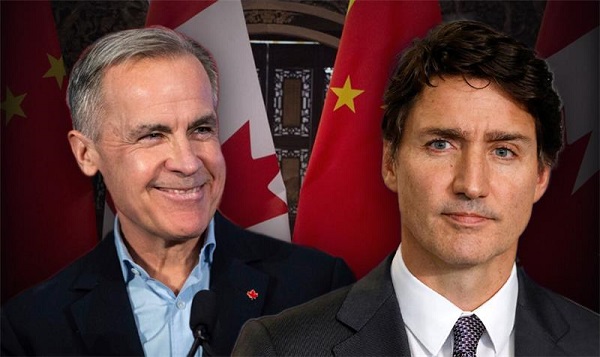Bruce Dowbiggin
Think U.S. Hockey Model Works Best? Guess Again
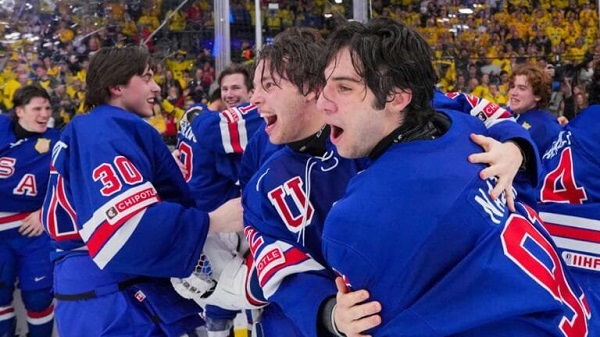
Canadians are still lamenting the pasting Team Canada absorbed at the World Junior Championships in Ottawa, won by the USA. Out of the medals, beaten by Latvia and Cechia, among others. There’s talk about the ongoing problems of the development system and the people at Hockey Canada.
Yes, Canada’s top eligible players (Macklin Celibrini, Connor Bedard) are in the NHL and unavailable to the team. And the massive feeder system— prospects spread out over the CHL, Junior A and NCAA— is inefficient at best. But the talent window is definitely narrowing.
As we wrote in August of 2021, “The hockey pipeline is full of young men whose fathers could give them a hockey education but who also knew many of right people to tap into. The sophisticated training and arduous diet regimes are getting more like Tom Brady and less like Gump Worsley. And they’re expensive— even in Howe’s home nation of Canada which honours its roots.”
What might be of interest is that people in the development system of American hockey are similarly distressed about the problems of developing players in their country. Cost, bureaucracy and the sheer time commitment for families is breaking a lot of people. “This discipline and access is reflected in the United States where the boom in hockey participation is resulting not in farm boys and rink rats but in privileged sons and daughters of highly paid NHL stars getting an inside track on making the league or the Olympics.”
Topher Scott of The Hockey Think tank.com has posted about what he sees in American hockey culture. “I’ve talked to so many people in youth hockey about how to change the toxic culture – and it’s tough hearing so many good people saying they can’t do it the way they want (the right way) because everyone else is doing it the other way (the business way) and if they don’t do it that way they’ll lose their club.
I’m calling BS. If you are involved in youth hockey, please listen to this clip. And if you are a person of influence wherever you are at, stand tall and don’t cater to the crazy. The only way we’ll see positive change is if people of influence in youth hockey areas, who know better, go against the grain and lead the change.”
The comments on his post are familiar in the burgeoning hockey system that now has roots in most states in the U.S. “Such a scam to charge these families 5/6k in dues per year and then pay another 10/20/30k in travel expenses.”
—“It’s an arms race and you are not going to stop that. Make it fun for the other 90% of kids and families that aren’t part of the arms race.”
—“This system beyond broken. Organizations telling some kids In the contract we have the right to put you on the lower team, as we may find other players to replace you, along w/ we are flying players in to play.”
—“U14 has kids who live in central USA playing on east coast teams. Nj pa and ny loaded w aaa programs, many refuse to play each other because of rankings”.
—“…the hockey culture DOES not like disruptors- they are a THREAT to exposing bad things & bad people. Loss of power, control, money & damaging adult egos trumps what is best for kids.”
—“I find it unbelievable that travel hockey programs demand kids miss Fri and Monday school days to play wraparound weekend tournaments 5X/yr or risk being thrown off the team. Its gotta stop!”
Scott and his X followers are describing the same issues affecting hockey in Canada where a number of financial and social changes have created a system dominated by clubs, agents, schools and ambitious parents. The image he presents of the overbearing parent— in concert with team officials— who are stage managing a child’s progress is familiar. One that dictates needing to take out a mortgage to create a young hockey star.

As we have written recently, the NCAA decision to now allow players with service in the CHL to play at the U.S. college level has accelerated the meat grinder of development hockey in Canada. Again, delusional parents are now demanding that their child have extra ice time and a prime spot on a team so as to qualify for a pro career. Adding to the pressure is the NIL program now radically restructuring college sports in the U.S. After winning the rights to name, likeness and image in the U.S. Supreme Court athletes can now be paid millions in some cases to attend a certain school or transfer through the “portal” system,.
While NIL has not hit hockey as dramatically as other sports, it’s just a matter of time till schools wanting the next Connor Bedard to attend their school will be tossing alumni and sponsor money to over-18 prodigies. Parents seeing this will re-double efforts at the minor level to get their child on the prospect track, paying vast amounts for training and travel.

One problem in Canada, as mentioned, is the vast network of teams demanding players on the men’s side. For prospects to star on the first line or in goal there must be others to play on the third line or be a seventh defenceman. This creates a meat grinder. While clubs sometimes level with parents about ice time there are plenty who are in denial, hoping their son or daughter can still cash in on the riches in the NHL from the fringes of the roster.
Some of this has been alleviated by scholarships for players depending on their years in the system. Canadian University hockey is full of 22-26 year olds using their CHL grants to pursue education. But there are many who simply melt away to play in minor pro leagues across the country and in Europe.
In the long run this may make the CHL an elite league for under 18 players or those who can’t manage the scholastic record to switch to NCAA. The NHL likes the longer CHL schedule with its pro model, but there is much to be said for a prospect growing at an academic institution, broadening their horizons.
But, as always, parents will follow the money and the dream— even if they’re unattainable.
Bruce Dowbiggin @dowbboy is the editor of Not The Public Broadcaster A two-time winner of the Gemini Award as Canada’s top television sports broadcaster. His new book Deal With It: The Trades That Stunned The NHL And Changed Hockey is now available on Amazon. Inexact Science: The Six Most Compelling Draft Years In NHL History, his previous book with his son Evan, was voted the seventh-best professional hockey book of all time by bookauthority.org. You can see all his books at brucedowbigginbooks.ca.
Bruce Dowbiggin
Healthcare And Pipelines Are The Front Lines of Canada’s Struggle To Stay United

Ottawa and Alberta have reached a memorandum of understanding that paves the way for, among other things,. a new oil pipeline in return for higher carbon taxes.. How’s it doing? B.C. and Quebec both reject the idea. The Liberals former Climate minister resigned his cabinet post.
The most amazing feature of the Mark Carney/Danielle Smith MOU is that both politicians feverishly hope that the deal fails. Carney can tell Quebec that he tried to reason with Smith, and Smith can say she tried to meet the federalists halfway. Failure suits their larger purposes. Carney to fold Canada into Euro climate insanity and Smith into a strong motive for separation.
We’ll have more in. our next column. In the meantime, another Alberta initiative on healthcare has stirred up the hornets of single payer.
To paraphrase Winston Churchill, “Canada’s health system is the worst in the world. Except for all the other systems.” If there is anything left that Canadians agree upon it’s that their provincial healthcare plan is a disaster that needs a boatload of new money and the same old class rhetoric about two-tier healthcare.
Both prescriptions have been tried multiple times since Tommy Douglas made single-payer healthcare a reality. As a result today’s delivery systems are constantly strained to breaking and the money poured in to support it evaporates in red tape and vested interests.
But suggest that Canada adopt the method of somewhere else and you get back stares. Who does it better? How can we copy that? Crickets. Then ask governments to cut back and create efficiencies. No one wants to tell the unions they are the first to move. As a result, operating rooms sit empty for lack of trained nurses and rationed doctors. The system is all dressed with nowhere to go.

There are many earnest people trying their best to fit the square peg in the round hole. But so far it has produced a Frankenstein quilt of private clinics in other provinces handling overflows and American hospitals taking tens of thousands of overflows or critical cases. Ontarians travelling to Quebec for knee surgery. Albertans heading to eastern B.C. for hips and shoulders. Nova Scotians going to Boston for back surgery.
To say nothing of the legions of Canadians on waiting lists for terminal cancer or heart problems who, in despair of dying before seeing a specialist in 18-24 months, voyage to Lithuania, India or Mexico to save their lives. Everyone knows a story of a family member or friend surgery shopping. Every Canadian health authority sympathizes. But little solves the problem.
Which has led to predictable grumbling. @Tablesalt13 if the Liberals hadn’t surged immigration over the last 4-5 years and if all of the money spent on refugees and foreign aid was redirected to health care how much shorter would Canada’s medical waitlists be?

And if any small progress is made the radical armies opposed to two-tiered healthcare raise a stink in the media, stopping that progress in its tracks. Suggesting public/ private healthcare systems is a quick trip to a Toronto Star editorial and losing your next election.
Into the impasse Alberta has introduced Bill 11 to create a parallel private–public surgery system that allows surgeons to perform non-urgent procedures privately under set conditions, moving ahead with the premier’s announcement last week. The government says the approach will shorten wait times and help recruit doctors, while critics argue it risks two-tier care.
The legislation marks a major shift in healthcare reform in Alberta and faces (shock) strong opposition from the NDP which is pairing these reforms with the province’s use of the notwithstanding clause in banning radical trans surgery and medication for minors in the province.
There are examples of two-tiered healthcare elsewhere in the West. France, Ireland, Denmark, Switzerland and Germany, among others, use a dual-tracked system mixing public and private coverages. Reports FHI, “In the most successful European healthcare systems, e.g., Germany and Switzerland, the federal government handles the PEC risk, via national pools and government subsidies, sparing the burden on individual insurers.” While not perfect it hasn’t produced class warfare.
The Americans, meanwhile learned to their chagrin with ObamaCare (the Affordable Care Act, that government healthcare is not the answer. The U.S. heath system replaces government accounting with health insurance rationers as the immoveable force. Many Americans were outside this traditional system, paying out-of-pocket. Under the Obama plan everyone would be forced into a plan, like it or not.
The AFI continues, “ACA has a flawed design. Its architects meant to appeal to the public, promising what the old system could not fully deliver – guaranteed access to affordable health cover and coverage for pre-existing conditions (PECs). But they were wrong about being able to keep your doctor or your old policy if you wanted.
Previously individual policies had to exclude PEC coverage to be financially viable. Yet employer group policies often covered it after a waiting period, but the extra costs were spread over their fellow workers – a real burden on medium and small-sized companies. Under Obamacare, the very high PEC costs are still spread too narrowly – on each of the very few insurers who have agreed to stay as exchange insurers.”
In other words getting a universal system that helps the needy while not degrading treatment is illusory. Alberta is willing to admit that fact. Like agreement on pipelines it will face nothing but headwinds from the diehards (pun intended) who still believe Michael Moore’s fairy tales about a free system in Canada. And will do nothing to bind Canada’s warring factions.
Bruce Dowbiggin @dowbboy is the editor of Not The Public Broadcaster A two-time winner of the Gemini Award as Canada’s top television sports broadcaster, his new book Deal With It: The Trades That Stunned The NHL And Changed hockey is now available on Amazon. Inexact Science: The Six Most Compelling Draft Years In NHL History, his previous book with his son Evan, was voted the seventh-best professional hockey book of all time by bookauthority.org . His 2004 book Money Players was voted sixth best on the same list, and is available via brucedowbigginbooks.ca.
Bruce Dowbiggin
Elbows Down For The Not-So-Magnificent Seven: Canada’s Wilting NHL Septet
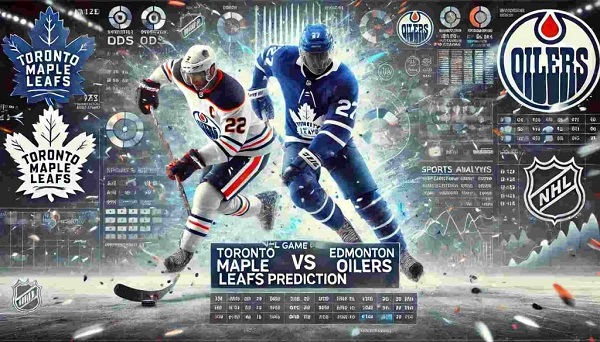
The week after Grey Cup is always a good time to look in for our first serious analysis at how Canada’s NHL teams are doing. So let’s take a quick… WHOA… what’s happening here?
If the playoffs were to begin next week (we wish) then it would be a cold breakfast for teams in Elbows Up. Just two clubs—Winnipeg and Montreal— would even qualify for the postseason. And the Jets have just found out their star goalie Connor Hellybuyck is unlikely to play much before mid-January.
The two putative Canadian hopes for a first Stanley cup since 1993— Toronto and Edmonton— are sucking on vapour trails. After being raked 5-2 by Montreal, the Leafs have just a 24.9 percent chance of making the playoffs. Conor McDavid’s Oilers have a better percentage but their same old goaltending woes and a ticking clock on McDavid’s back.
Granted that, going into the weekend, no team in the East was more than four points out of the wild-card spot while all but three teams were within three points of a playoff spot in the West. But the Canadian teams are stuck behind some premium teams and need lotsa’ luck so they end up like Max Verstappen not Lance Stroll.
Maybe a Canadian men’s Olympic gold medal can reduce the sting of no Cup, no future for another season. But it won’t save the jobs of coaches in Calgary, Toronto and Vancouver unlikely to survive also-ran status. Let’s take a close look at the not-so-magnificent seven starting west to east.
Vancouver: The Nucks have a sterling 4 percent chance of making the postseason as of this writing. In the powerful Western Conference that’s still an insult to a franchise that hasn’t recovered from the hasty 2013 firing of GM Mike Gillis—who won… let us us see… two Presidents Trophies and six Western Conference titles in a row. Since then? Uh, bagel.
It’s nice that Elias Petterson has come back from the morgue this season. But it will come down to goalie Thatcher Demko staying healthy and whether ownership wants to go full tank or just a quarter-tank for a draft pick. Hard to see Adam Foote surviving as coach.
Calgary: Speaking of tanking, everyone in Calgary wants the Flames to do a teardown for the top picks in the 2026 Draft. Everyone, except, for the Flames absentee owner Murray Edwards and his robo-spokesman Don Maloney. They want the five percent chance at a playoff spot and a mid-round first draft pick. The Flames missed the chance to restructure in 2023 when Johnny Gaudreau and Matthew Tkachuk departed. But again, denialism in the management suite tried to make it an even trade with Florida, sign huge new contracts and keep pushing. Bad decision.
Only question here is when does the purge begin and what can they get to help Dustin Wolf— signed for seven more years— in net?
Edmonton: We’ve written at length here and here about the McDavid saga. He and the management team halved the baby with a short-term deal to pretend he’s staying in the Chuck. Their healthy chance of making the playoffs (75.5 percent) says one thing. Their play in the putrid Pacific— they’re given up six-goals-plus five times in just 24 games— says another. But as long as McDavid and Leon Draisaitl stay healthy they might still finesse a ticket to a their third straight Finals ride.
But if they get near the trading deadline and the postseason is a mirage the noise to trade McDavid will be deafening. And the offers staggering for a capped-out team.
Winnipeg: Last year was supposed to be the Jets big year. Okay, that didn’t work out so well. The Jets kept their core together for another chance at finally making a serious playoff run. So it will all come down, as it has in the past, to the health and playoff juju of Hellybuyck. Their ticket out of the Central Division lies in beating powerful Colorado and Dallas and, if that happens, staying healthy.
The Jets would probably just as well their stars didn’t go get beat up in the Olympics, but that’s unlikely. There’s always been a karma about Winnipeg breaking the Canada Cup jinx. Still a long shot.

EAST
Toronto: So you’re saying Mitch Marner wasn’t the problem with the highly rated Maple Leafs never getting as far as the Conference Finals? They’re 3-5-2 in their last ten, their captain is still a sulky figure— only now his output doesn’t make it worthwhile. And the Toronto media is trying to do the players’ will to get coach Craig Berube fired for them. The same problems remain from years previous: dubious goaltending and a shallow talent pool on defence.
The biggest problem for the Leafs is their closing window for success. They’re old, have few tradeable assets in the system and have traded top picks away for short-term gains that never appeared. Expect fireworks after the Olympics if this crate doesn’t get moving. New MLSE boss Keith Pelley has no ties to the current administration and will sweep clean.
Ottawa: The Sens have managed to survive the loss of captain Brad Tkachuck to a broken finger. How? Ottawa have gotten goals from 17 different players which means they have balance. And so far they are above average 5-on-5. All good. They’ve also taken advantage of the mediocrity of the Leafs and other Eastern teams to stay afloat.
Their Achilles heel? Between the pipes. Both goalies have a save percentage under .875 and that ain’t going to cut it come spring. As always finances will limit their trades and manoeuvrability.

Montreal: The Habs were the fashionable pick before the season as the Canadian team most likely to get to the Cup they last won in 1993. Defenceman Laine Hutson is all that he promised last year. The dynamic top line of Cole Caufield, Nick Suzuki and Juraj Slafkovsky have cast back to the days of the Flying Frenchmen. Managing expectations in Montreal’s rabid hockey culture— where a misplaced apostrophe can cause chaos—means never taking anything for granted.
Now if only goaltender Jacob Dobes can keep up his play long enough for Sam Montembault to regain his form the Habs could be a thing in the spring. At this rate they might be the only thing.
Bruce Dowbiggin @dowbboy is the editor of Not The Public Broadcaster A two-time winner of the Gemini Award as Canada’s top television sports broadcaster, his new book Deal With It: The Trades That Stunned The NHL And Changed hockey is now available on Amazon. Inexact Science: The Six Most Compelling Draft Years In NHL History, his previous book with his son Evan, was voted the seventh-best professional hockey book of all time by bookauthority.org . His 2004 book Money Players was voted sixth best on the same list, and is available via brucedowbigginbooks.ca.
-

 Alberta2 days ago
Alberta2 days agoFrom Underdog to Top Broodmare
-
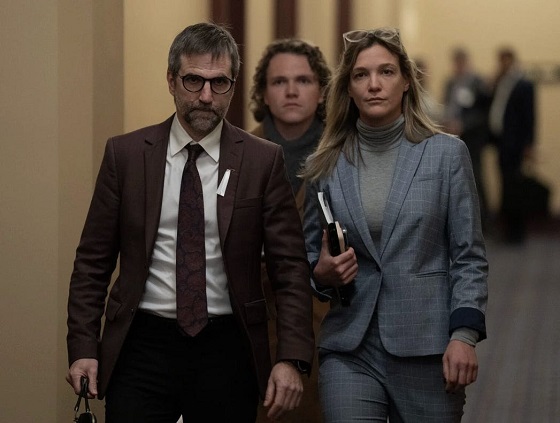
 Business2 days ago
Business2 days agoMan overboard as HMCS Carney lists to the right
-
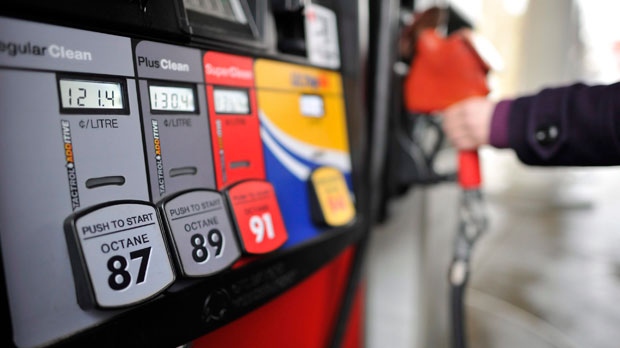
 Business2 days ago
Business2 days agoHigher carbon taxes in pipeline MOU are a bad deal for taxpayers
-
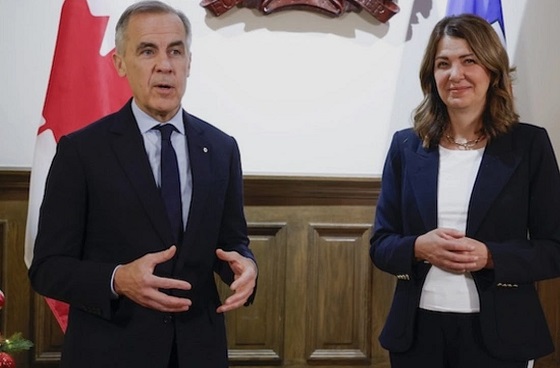
 Alberta2 days ago
Alberta2 days agoREAD IT HERE – Canada-Alberta Memorandum of Understanding – From the Prime Minister’s Office
-

 Alberta1 day ago
Alberta1 day agoIEA peak-oil reversal gives Alberta long-term leverage
-

 Bruce Dowbiggin1 day ago
Bruce Dowbiggin1 day agoHealthcare And Pipelines Are The Front Lines of Canada’s Struggle To Stay United
-
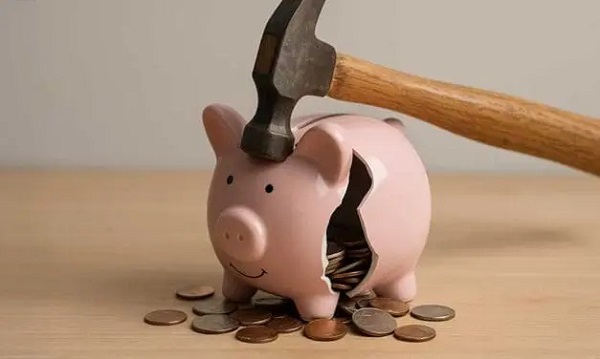
 Alberta1 day ago
Alberta1 day agoAlberta can’t fix its deficits with oil money: Lennie Kaplan
-
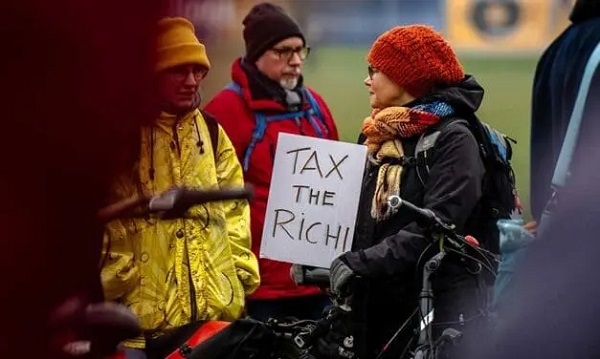
 Business1 day ago
Business1 day agoCanadians love Nordic-style social programs as long as someone else pays for them



